U.S. Navy Systems Commands,Direct-Reporting Program Managers (DRPMs), and Program
Executive Officers (PEOs), January 1999
- Naval Air Systems Command
- Naval Facilities Engineering Command
- Naval Sea Systems Command
- Naval Supply Systems Command
- Space and Naval Warfare Systems Command
- DRPM Advanced Amphibious Assault Vehicle
- DRPM Strategic Systems Programs
- DRPM Advanced Technology
- PEO Air Anti-Submarine Warfare, Assault, and Special Mission Programs
- PEO Aircraft Carriers
- PEO Cruise Missiles and Joint Unmanned Aerial Vehicles
- PEO DD-21 and Associated Technology
- PEO Expeditionary Warfare
- PEO Joint Strike Fighter
- PEO Mine Warfare
- PEO Space, Communications, and Sensors
- PEO Submarines
- PEO Tactical Aircraft Program
- PEO Theater Surface Combatants
- PEO Undersea Warfare
DOD ACQUISITION SYSTEM
Acquisition Milestones
| Pre-Milestone | 0 | Requirement or Agency Need |
| Milestone | 0 | Concept Studies Approval |
| Phase | 0 | Concept Exploration and Definition |
| Milestone | I | Command Project Acceptance |
| Phase | I | Program Definition and Risk Reduction |
| Milestone | II | Development Approval |
| Phase | II | Engineering and Manufacturing Development |
| Milestone | III | Production Approval |
| Phase | III | Production, Deployment, and Operational Support |
Common acronyms used throughout this chapter include:
| ADM | Acquisition Decision Memorandum |
| AOA | Analysis of Alternatives |
| COEA | Cost and Operational Effectiveness Analysis |
| CDR | Critical Design Review |
| COTS | Commercial Off-The-Shelf |
| ECP | Engineering Change Proposal |
| EMD | Engineering and Manufacturing Development |
| FOC | Full Operational Capability |
| FYDP | Future Years Defense Plan |
| GOTS | Government Off-The-Shelf |
| IOC | Initial Operational Capability |
| LFT&E | Live Fire Test and Evaluation |
| LRIP | Low-Rate Initial Production |
| NDI | Non-Developmental Item |
| OPEVAL | Operational Evaluation |
| ORD | Operational Requirements Document |
| PD&RR | Program Definition and Risk Reduction |
| P3I | Pre-Planned Product Improvement |
| R&D | Research and Development |
| RDT&E | Research, Development, Test, and Evaluation |
| TECHEVAL | Technical (Developmental) Evaluation |
| UOES | User Operational Evaluation System |
Electronics, and Information Warfare Systems |
Control, Communications, Computers, and Intelligence |
Programs |
||
|
- Aircraft - Submarines - Surface Ships, Craft & Logistics Systems
|
- Airborne - Submarine - Surface
|
- Airborne - Subsurface - Surface
|
- Joint-Service/ Navy-Wide Systems - Airborne - Submarine - Surface
|
- Dedicated Mine Countermeasures Systems - Naval Mining - Organic Mine Countermeasure Systems |
PLATFORMS
Aircraft
AH-1Z Super Cobra and UH-1Y Huey Upgrade
 Description: The AH-1 Super Cobra is a two-place, twin-engine attack helicopter capable of land- or sea-based operations. It provides rotary-wing close air support (CAS), anti-armor/anti-helicopter, armed escort, armed and visual reconnaissance, and supporting arms coordination (SAC) during day/night and adverse weather conditions. The UH-1 Huey is a combat utility helicopter that provides airborne command and control, SAC, medical evacuation, maritime special operations, and search and rescue, also during day/night and adverse weather
conditions.
Description: The AH-1 Super Cobra is a two-place, twin-engine attack helicopter capable of land- or sea-based operations. It provides rotary-wing close air support (CAS), anti-armor/anti-helicopter, armed escort, armed and visual reconnaissance, and supporting arms coordination (SAC) during day/night and adverse weather conditions. The UH-1 Huey is a combat utility helicopter that provides airborne command and control, SAC, medical evacuation, maritime special operations, and search and rescue, also during day/night and adverse weather
conditions.
AV-8B Harrier II+ Tactical Aircraft Remanufacture
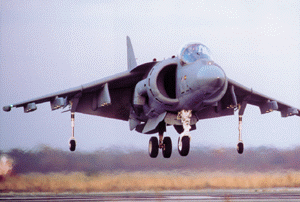
C-40A
Navy-Unique Fleet Essential
Airlift Replacement Aircraft
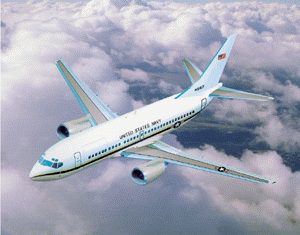
CH-60
Fleet Combat Support Helicopter
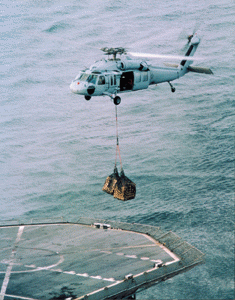
E-2C Hawkeye
Airborne Early Warning Group II Program
- Extended radar range (40% greater than previous E-2 aircraft)
- Improved overland detection capability
- Color displays
- Joint Tactical Information Distribution System (JTIDS), Global Positioning System (GPS), and voice satellite communications
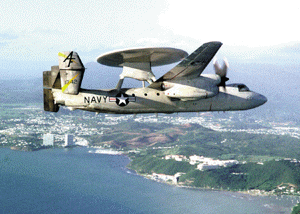
E-6A/B Mercury
Airborne Command Post/TACAMO Aircraft

- Battle staff compartment for C3 operations and an Airborne Launch Control Center (ALCC) for
ICBM programming and launch
- Orbit Improvement System for increased VLF and LF transmit antenna efficiency
- GPS for improved navigation and timing signals
- A MILSTAR EHF/UHF command post terminal for secure, survivable C3
- Mission Computer System (MCS) for expanded processing to receive, store, and transmit
messages and control for the MILSTAR antenna
- An LF transmit capability for increased frequency spectrum and reliability
- UHF frequency division multiplexing for air/air and air/ground links; and six STU-IIIR phones for
secure voice and data transmissions
Follow-on improvement programs include:
- Modified Miniature Receiver Terminal (MMRT) to replace the existing obsolete terminal
- Multi-function Display System (MDS) for meeting emerging Federal Aviation administration and
International Civil Aviation Organization (ICAO) flight management and terminal requirements
- Additional satellite C3 capabilities for improved Global Command and Control System interoperability supporting theater Commander-in-Chief missions.
EA-6B Prowler
Electronic Warfare Aircraft
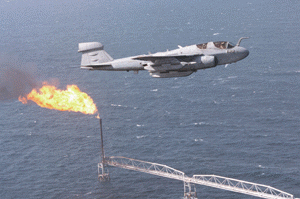
EP-3E Aries II
Signals Intelligence Aircraft
F-14A/B/D
Tomcat Strike-Fighter Aircraft

F/A-18C/D Hornet
Fighter/Attack Aircraft
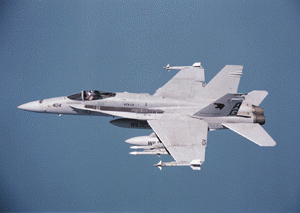
F/A-18E/F Super Hornet
Fighter/Attack Aircraft

JSF
Joint Strike Fighter
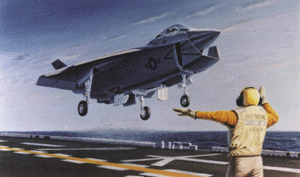
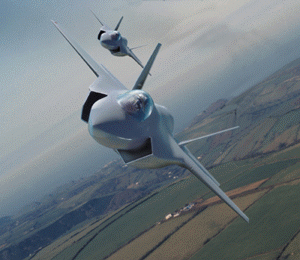
JPATS
Joint Primary Aircraft Training System
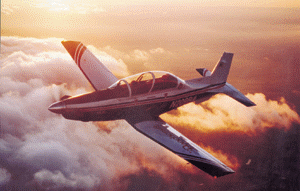 Program Status: The Air Force is the lead service for JPATS. The program passed Milestone II in
August 1995 and is scheduled for Milestone III in December 1999. The first production T-6A was
completed in 1998 and will be delivered to the Air Force in 1999 once testing is completed. Air
Force Initial Operational Capability is scheduled for FY 2001 and Navy IOC is planned for FY
2003. The Air Force and Navy are scheduled to procure 740 aircraft with the last aircraft being
delivered to the Navy in 2017. The Ground Based Training System (GBTS), with its overarching
Training Integrated Management System (TIMS), is scheduled to be operational for both services
by 2001.
Program Status: The Air Force is the lead service for JPATS. The program passed Milestone II in
August 1995 and is scheduled for Milestone III in December 1999. The first production T-6A was
completed in 1998 and will be delivered to the Air Force in 1999 once testing is completed. Air
Force Initial Operational Capability is scheduled for FY 2001 and Navy IOC is planned for FY
2003. The Air Force and Navy are scheduled to procure 740 aircraft with the last aircraft being
delivered to the Navy in 2017. The Ground Based Training System (GBTS), with its overarching
Training Integrated Management System (TIMS), is scheduled to be operational for both services
by 2001.
KC-130J
Hercules Tactical Tanker and Transport
P-3C Orion
Sustained Readiness Program (SRP) and
Anti-Surface Warfare Improvement Program (AIP)
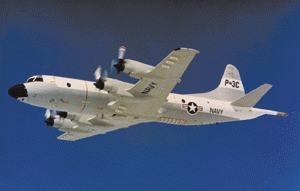 provides effective undersea warfare, anti-surface warfare, and Command, Control, Communications, Computers, and Intelligence, Surveillance, and
Reconnaissance (C4ISR) capabilities to naval and joint commanders. The current force of 12
active and seven reserve squadrons supports the theater and fleet commanders' requirements for
40 P-3Cs continuously forward-deployed. Orions provide long-range, high-endurance support to
aircraft carrier battle groups and amphibious ready groups.
provides effective undersea warfare, anti-surface warfare, and Command, Control, Communications, Computers, and Intelligence, Surveillance, and
Reconnaissance (C4ISR) capabilities to naval and joint commanders. The current force of 12
active and seven reserve squadrons supports the theater and fleet commanders' requirements for
40 P-3Cs continuously forward-deployed. Orions provide long-range, high-endurance support to
aircraft carrier battle groups and amphibious ready groups.
- P-3C Update III: The conversion of remaining P-3C aircraft to the Update III system architecture
will result in one common (active and reserve) configuration. Update III is the baseline
configuration required to use advanced sensors and weapons. This program will enhance
interoperability, replace obsolete components, and reduce support costs of maintaining varied
avionics-configured airframes.
- Anti-Surface Warfare Improvement Program: AIP will provide an enhanced sensor, C4ISR, and
weapon capability. The program includes the incorporation of the Stand-off Land-Attack (SLAM)
and Maverick missiles, survivability enhancements, an advanced imaging radar, and electro-optic
sensors. Other upgrades include improved satellite communications, and provisions for near-real-
time connectivity of surveillance and reconnaissance data with battle group and national
command decision-makers.
- Inventory Sustainment: The Sustained Readiness Program (SRP) is designed to address aircraft material condition and supportability issues. The SRP will extend the service life of the aircraft from 29.5 years to the fatigue life remaining (approximately 38 years). A Service Life Assessment Program (SLAP) is in progress to determine the requirements for a Service Life Extension Program (SLEP) that will extend aircraft fatigue life an additional ten years. SLEP will begin in FY 2002 as part of a combined SRP/SLEP effort.
S-3B
Viking
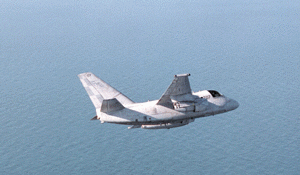
SH-60R
Multi-mission Helicopter Upgrade

T-45TS
Undergraduate Jet Pilot Training System
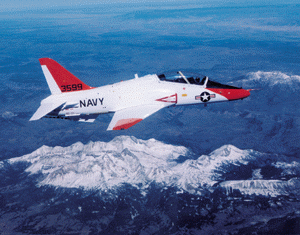
V-22 Osprey
Joint Advanced Vertical Aircraft



